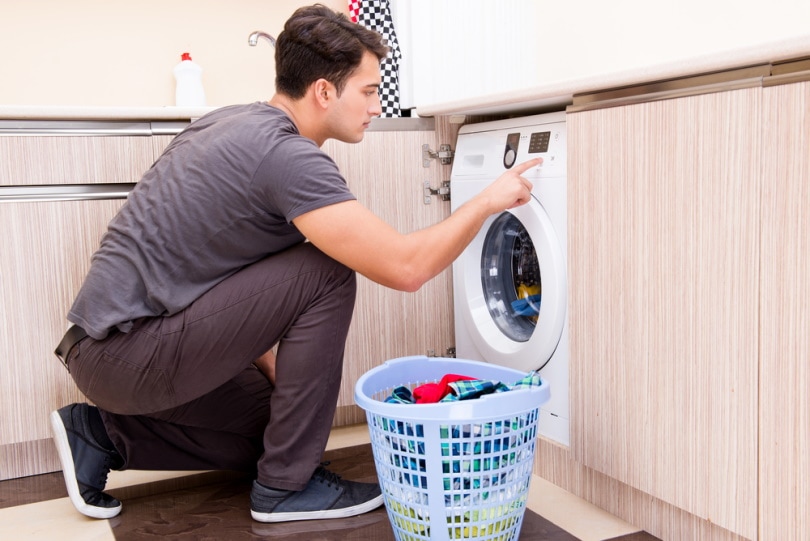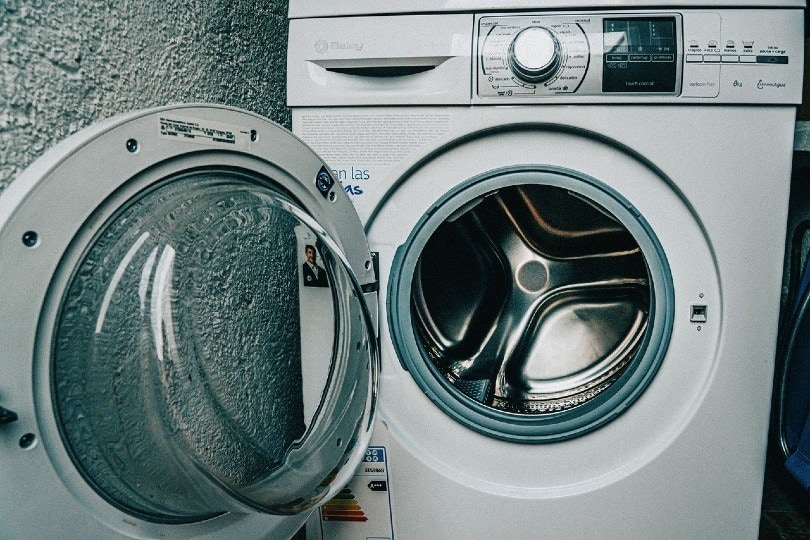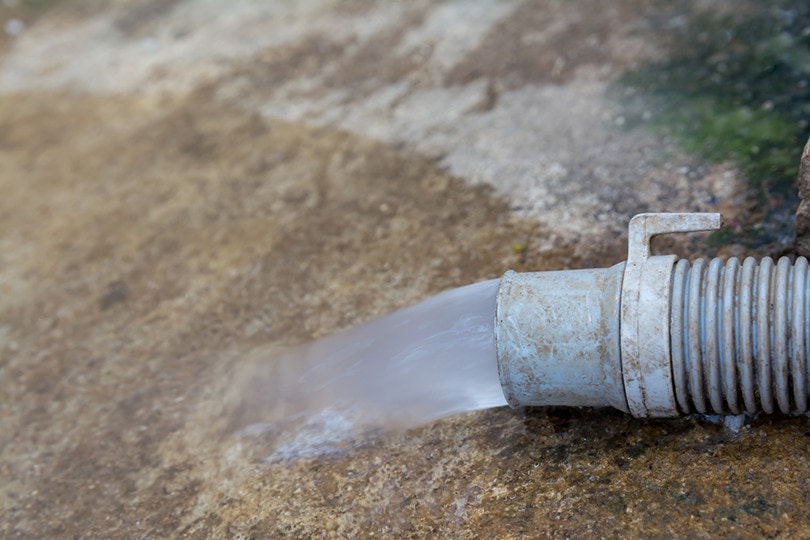How to Drain Water from a Washing Machine in 4 Simple Steps
-
Codee Chessher
- Last updated:
When your washing machine won’t drain, you’re probably wondering how the heck you’re supposed to get the water out. You can’t exactly diagnose the issue with the drum full of water, so let’s find out how to manually drain a washing machine.
Below, we’ll cover everything you need to get the job done and how to go about it.
Before You Start

As with any household task involving appliances, you’ll have to gather some items first. There’s some disassembly and light plumbing work, but nothing too strenuous. Anyone who can gather the equipment below can have their washer drained in no time. Let’s see what you’ll need:
- Bucket (5-gallon or larger)
- Needle nose pliers
- Drain snake
- Towels
- Screwdriver
How to Drain Water From the Washer in 4 Steps
1. Turn Off the Power and Prep the Area

The first rule of working on appliances is to turn the power off, which you can do by simply unplugging the machine. Don’t put the cord on the ground because soon, things are going to get very wet. Next, lay down towels in the area surrounding your washer to soak up any excess water. You’ll be glad you have them!
2. Disconnect the Drain System

First, move the washer away from any adjacent walls so you have room to access the back and work. There’s nothing worse than doing repair work in a cramped area, so give yourself some leeway.
Locate the drain hose coming out of the back of your washer. Red and blue hoses are typically for cold and hot water, while drain hoses may be gray or black. Once you’ve identified the hose, disconnect it while being careful to hold both ends of the hose up so water doesn’t flow out of it.
3. Drain the Water

Have your bucket handy and lower one end of the hose into it. Water should flow into the bucket, but if it doesn’t, you have a clog in the drain hose. Before you grab the drain snake, though, make sure the line isn’t kinked or twisted. Now you can get the snake and run it through the hose to remove blockages.
If the washer is very full, you might find small buckets filling up very quickly. If you need to make a trip to empty it, hold one end of the hose up and connect it back to the washer. Empty the water and repeat as many times as needed until the washer is empty.
4. Verify the Clog Is Gone
If the drain hose wasn’t clogged, your next step is to look where it connects to the washer. Chances are that the drain pump or coin trap is clogged up with dirt, coins, or other debris. Try removing it and fully reassembling the washer.
Start the washer on a normal cycle and let it run until it drains for the first time. If the washer doesn’t drain, immediately turn it off and call a professional. If it does, feel free to do laundry as usual.
Conclusion
Washing machines can easily clog up if dirt, hair, or other debris accumulates within the drain hose, pump, or coin trap. Follow the steps above to manually empty the water in your washer and call a professional if that doesn’t do the trick. It’s likely there’s more work to be done on your washer, and they’ll be best qualified to handle it.
Featured Image Credit: Pixel-Shot, Shutterstock
Contents
